This set of Class 12 Biology Chapter 10 Multiple Choice Questions & Answers (MCQs) focuses on “Microbes in Human Welfare”. These MCQs are created based on the latest CBSE syllabus and the NCERT curriculum, offering valuable assistance for exam preparation.
1. What is the average size of a microbe?
a) Less than 1 mm
b) More than 1 cm
c) Less than 0.1 mm
d) More than 0.1 mm
View Answer
Explanation: Microbes are microorganisms which have a size less than 0.1 mm. Besides macroscopic plants and animals, microbes are the major components of biological systems on this earth.
2. Microbes are only present in hot and humid areas.
a) True
b) False
View Answer
Explanation: Microbes occur everywhere- in soil, water, air, inside our bodies and that of other animals and plants. They are present even at sites where no other life-form could possibly exist- sites such as deep inside geysers, deep in the soil, etc.
3. Which of the following is not related to microbes?
a) Microbes are not ideal for biotechnology
b) Microbes produce chemicals during their metabolism
c) Microbes can be grown on artificial medium
d) Microbes can live in highly acidic medium
View Answer
Explanation: Microbes can be grown on artificial cultures media where they form colonies. During their metabolism, microbes produce chemicals, some of which are used by human beings. Microbes can live in highly acidic as well as an alkaline medium. Microbes are certainly ideal for biotechnology.
4. Which of the following is not microbe?
a) Bacteria
b) Protozoa
c) Viroids
d) Worms
View Answer
Explanation: Microbes are diverse in nature and include- protozoa, bacteria, fungi and microscopic animal and plant viruses, viroids and also prions that are proteinaceous infectious agents.
5. Which shape of bacteria has been represented in the following diagram?
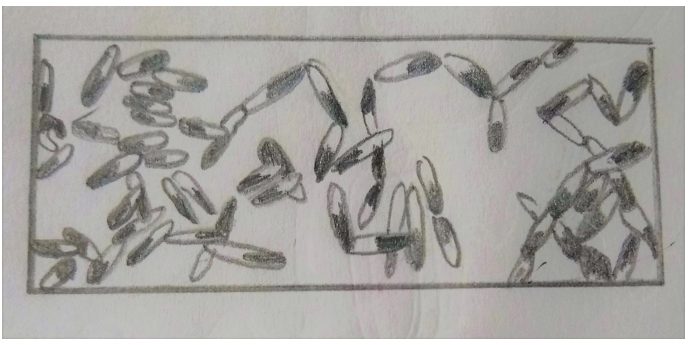
a) Rod-shaped
b) Comma shaped
c) Spiral shaped
d) Spherical shaped
View Answer
Explanation: The following diagram represents rod-shaped bacteria, magnified 1500X. Some examples of rod-shaped bacteria include Lactobacillus, Morganella, Bacillus anthracis, Klebsiella pneumoniae.
6. Which shape of bacteria has been shown in the following diagram?
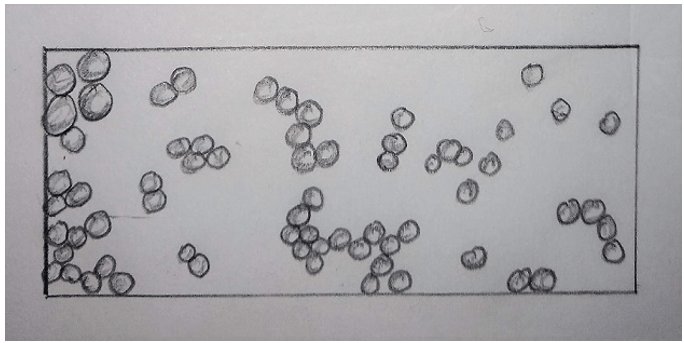
a) Rod-shaped
b) Comma shaped
c) Spiral shaped
d) Spherical shaped
View Answer
Explanation: The following diagram represents spherical shaped bacteria, magnified 1500X. Some examples of Spherical shaped bacteria include Staph aureus, Staph epidermidis, Staph haemolyticus, Strep pyrogenes, etc.
7. The following diagram represents ____________
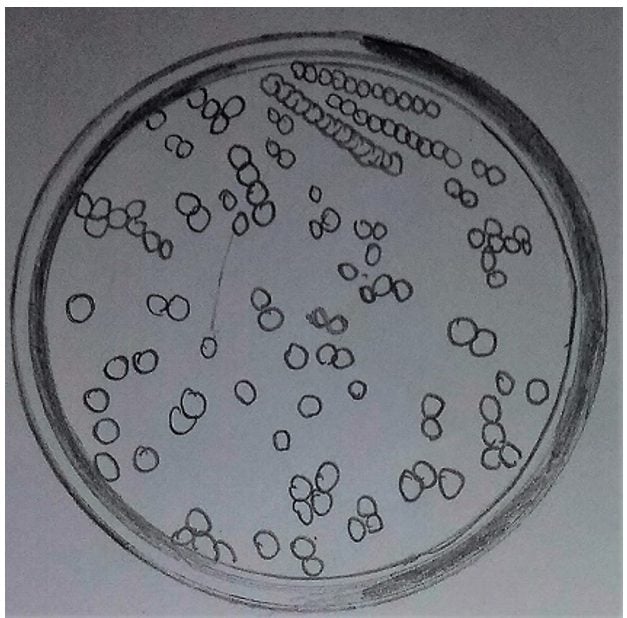
a) Plate with worms
b) Colonies of bacteria on a petri dish
c) Onion root cells on a plate
d) Cheek cells
View Answer
Explanation: The following diagram represents colonies of bacteria on a petri dish. Microbes like bacteria and many fungi can be grown on nutritive media to form colonies, that can be seen with naked eyes.
8. All microbes are harmful to humankind.
a) True
b) False
View Answer
Explanation: Although microbes cause a large number of diseases in human beings, various animals and plants, but not all microbes are harmful. Several microbes are useful to humans in diverse ways like in household products, industrial products, agricultural products, etc.
9. In the following diagram, what does the question mark represent?
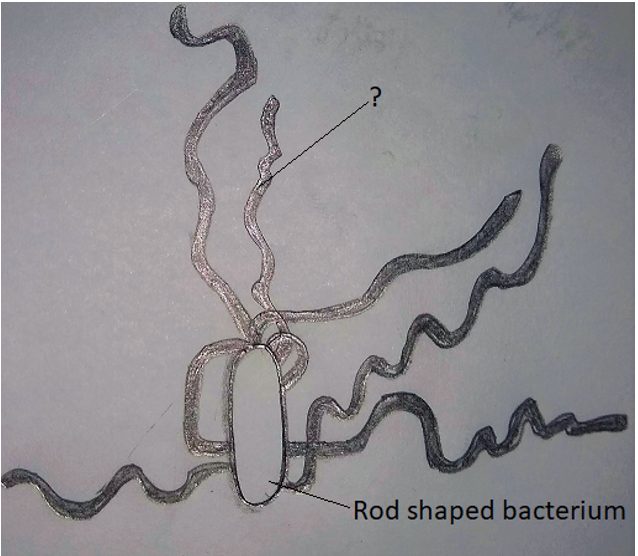
a) Cilia
b) Flagella
c) Hair
d) Pseudopodia
View Answer
Explanation: The question mark in the following figure represents flagella of a rod-shaped bacterium. It is 50,000X magnified image of a bacterium.
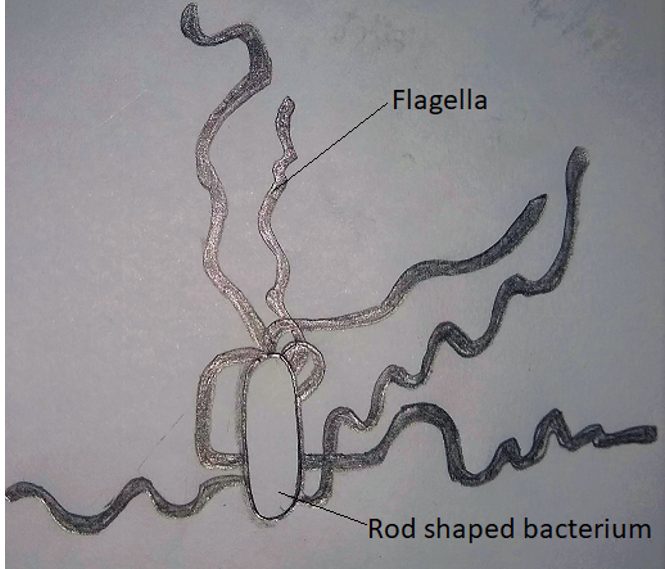
10. Adenoviruses cause _________
a) Respiratory infections
b) Gastric problems
c) Intestinal perforation
d) Heart attack
View Answer
Explanation: Adenoviruses cause respiratory infections. These are non-enveloped viruses with a double-stranded DNA genome. The following diagram shows an adenovirus:
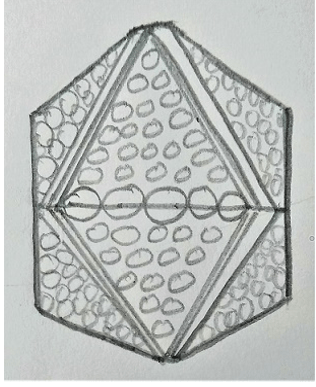
More MCQs on Class 12 Biology Chapter 10:
- Chapter 10 – Microbes in Human Welfare MCQ (Set 2)
- Chapter 10 – Microbes in Human Welfare MCQ (Set 3)
- Chapter 10 – Microbes in Human Welfare MCQ (Set 4)
- Chapter 10 – Microbes in Human Welfare MCQ (Set 5)
- Chapter 10 – Microbes in Human Welfare MCQ (Set 6)
- Chapter 10 – Microbes in Human Welfare MCQ (Set 7)
- Chapter 10 – Microbes in Human Welfare MCQ (Set 8)
- Chapter 10 – Microbes in Human Welfare MCQ (Set 9)
- Chapter 10 – Microbes in Human Welfare MCQ (Set 10)
To practice all chapters and topics of class 12 Biology, here is complete set of 1000+ Multiple Choice Questions and Answers.
If you find a mistake in question / option / answer, kindly take a screenshot and email to [email protected]
- Check Class 12 - Biology Books
- Practice Class 11 - Biology MCQs
- Practice Class 12 - Chemistry MCQs
- Practice Class 12 - Physics MCQs
- Practice Class 12 - Mathematics MCQs
